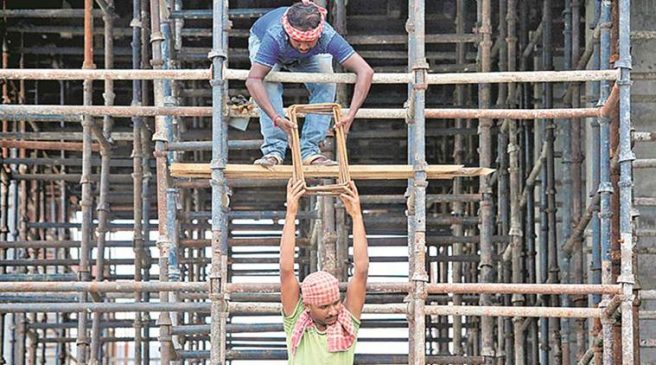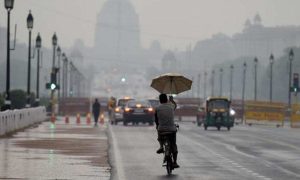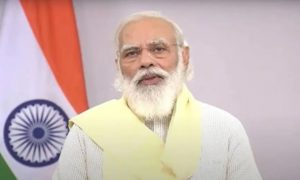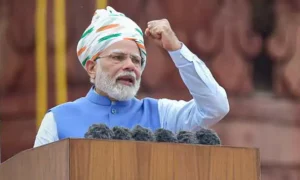As the economy struggles with the lockdown and thousands of firms and workers stare at an uncertain future, some state governments last week decided to make significant changes in the application of labour laws.
The most significant changes were announced by three BJP-ruled states — UP, MP and Gujarat — but several other states, ruled by the Congress (Rajasthan and Punjab) as well as BJD-ruled Odisha, too made some changes, although smaller in scope. UP, the most populous state, has made the boldest changes as it summarily suspended the application of almost all labour laws in the state for the next three years.
On the face of it, these changes are being brought about to incentivise economic activity in the respective states. Keeping aside the questions of law — labour falls in the Concurrent List and there are many laws enacted by the Centre that a state cannot just brush aside — the key question is: Are these the long-pending reforms of the labour market that economists used to talk about, or is the suspension of labour laws an ill-timed and retrograde step that critics have made it out to be?
What are Indian labour laws?
Estimates vary but there are over 200 state laws and close to 50 central laws. And yet there is no set definition of “labour laws” in the country. Broadly speaking, they can be divided into four categories. Chart 1 provides the categorisation, with examples.
The main objectives of the Factories Act, for instance, are to ensure safety measures on factory premises, and promote health and welfare of workers. The Shops and Commercial Establishments Act, on the other hand, aims to regulate hours of work, payment, overtime, weekly day off with pay, other holidays with pay, annual leave, employment of children and young persons, and employment of women.
The Minimum Wages Act covers more workers than any other labour legislation. The most contentious labour law, however, is the Industrial Disputes Act, 1947 as it relates to terms of service such as layoff, retrenchment, and closure of industrial enterprises and strikes and lockouts.
Why are labour laws often criticised?
Indian labour laws are often characterised as “inflexible”. In other words, it has been argued that thanks to the onerous legal requirements, firms (those employing more than 100 workers) dither from hiring new workers because firing them requires government approvals. As Chart 4 shows, even the organised sector is increasingly employing workers without formal contracts. This, in turn, the argument goes, has constrained the growth of firms on the one hand and provided a raw deal to workers on the other.
Others have also pointed out that there are too many laws, often unnecessarily complicated, and not effectively implemented. This has laid the foundation for corruption and rent-seeking.
Essentially, if India had fewer and easier-to-follow labour laws, firms would be able to expand and contract depending on the market conditions, and the resulting formalisation — at present 90% of India’s workers are part of the informal economy — would help workers as they would get better salaries and social security benefits.

Is that what is proposed by states like UP?
As a matter of fact, no. UP, for instance, has summarily suspended almost all labour laws including the Minimum Wages Act.
Radhicka Kapoor of ICRIER characterised this as “creating an enabling environment for exploitation”. That’s because far from being a reform, which essentially means an improvement from the status quo, the removal of all labour laws will not only strip the labour of its basic rights but also drive down wages. For instance, what stops a firm from firing all existing employees and hiring them again at lower wages, she pointed out.
In that sense, from the perspective of the workers, the government has completely turned its stand from asking firms not to fire workers and pay full salaries at the start of the lockdown, to stripping workers of their bargaining power now.
Moreover, far from pushing for a greater formalisation of the workforce, this move will in one go turn the existing formal workers into informal workers as they would not get any social security.
Why will wages fall?
For one, as Chart 3 shows, even before the Covid-19 crisis, thanks to the deceleration in the economy, wage growth had been moderating. Moreover, there was always a wide gap between formal and informal wage rates. For example, a woman working as a casual labourer in rural India earns just 20% of what a man earns in an urban formal setting.
If all labour laws are removed, most employment will effectively turn informal and bring down the wage rate sharply. And there is no way for any worker to even seek grievance redressal, said Amarjeet Kaur, General Secretary of AITUC.

Would these changes not boost employment and spur economic growth?
Theoretically, it is possible to generate more employment in a market with fewer labour regulations. However, as the experience of states that have relaxed labour laws in the past suggests, dismantling worker protection laws have failed to attract investments and increase employment, while not causing any increase in worker exploitation or deterioration of working conditions.
Ravi Srivastava, Director, Centre for Employment Studies at the Institute of Human Development, said employment will not increase, because of several reasons.
First, there is already too much unused capacity. Firms are shaving off salaries up to 40% and making job cuts. The overall demand has fallen. Which firm will hire more employees right now, he asked.
Kaur said that if the intention was to ensure more people have jobs, then states should not have increased the shift duration from 8 hours to 12 hours. They should have allowed two shifts of 8-hours each instead, she said, so that more people can get a job.
Both Srivastava and Kapoor said this move and the resulting fall in wages will further depress the overall demand in the economy, thus hurting the recovery process. “The timing is all wrong,” said Kapoor. “We are moving in the exact opposite direction,” said Srivastava.
Could the government have done something else?
Srivastava said that instead of creating exploitative conditions for the workers, the government should have — as most governments have done across the world (Chart 5) — partnered with the industry and allocated 3% or 5% of the GDP towards sharing the wage burden and ensuring the health of the labourers “because if Covid hits them, the whole country would be sunk”.
Moreover, beyond labour regulations, firms faces a lot of other hurdles like the shortage of skilled labour and the weak enforcement of contracts etc.





































